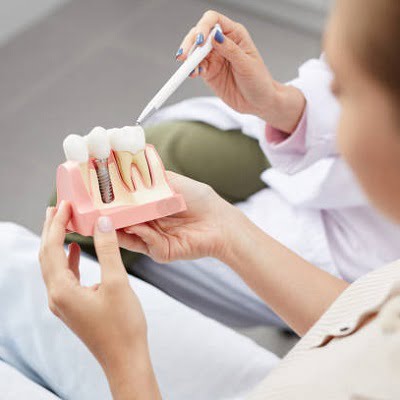
 When it comes to restoring a missing tooth, dental implants in islamabad have revolutionized modern dentistry. With their exceptional stability and natural appearance, dental implants provide a long-lasting solution that mimics the functionality and aesthetics of natural teeth. But have you ever wondered how these remarkable replacements are securely kept in place?
When it comes to restoring a missing tooth, dental implants in islamabad have revolutionized modern dentistry. With their exceptional stability and natural appearance, dental implants provide a long-lasting solution that mimics the functionality and aesthetics of natural teeth. But have you ever wondered how these remarkable replacements are securely kept in place?
In this blog, we will delve into the fascinating world of dental implants and explore the techniques used to anchor them firmly within the jawbone. Keep reading!
Understanding Dental Implants:
Dental implants are prosthetic tooth roots made of biocompatible materials such as titanium. They are surgically placed into the jawbone, providing a sturdy foundation for a replacement tooth or a dental crown.
What sets dental implants apart from other tooth replacement options is their ability to fuse with the jawbone through a process called osseointegration. This fusion not only ensures stability but also stimulates the surrounding bone, preventing bone loss and preserving facial structure.
The Key Players: Implant Components:
Before we delve into how dental implants are anchored, it is essential to understand the three primary components of an implant:
- Implant Fixture: This is the actual implant, typically made of titanium, which is inserted into the jawbone. It resembles a screw and serves as the replacement tooth root.
- Abutment: Once the implant fixture has integrated with the jawbone, the abutment is attached to it. This connector piece protrudes above the gum line, providing support for the dental crown or prosthetic tooth.
- Prosthetic Crown: The visible part of the dental implant, the prosthetic tooth or crown, is custom-made to match the color, shape, and size of your natural teeth. It is securely attached to the abutment, completing the dental implant restoration.
The Implant Anchoring Process:
Comprehensive Assessment and Treatment Planning:
Before any dental implant procedure, your dentist will conduct a thorough examination, including X-rays and scans, to assess the condition of your jawbone, gums, and surrounding teeth. This evaluation helps determine if you are a suitable candidate for implants and guides the treatment planning process.
Implant Placement Surgery:
The first step in anchoring dental implants is the surgical placement of the implant fixture. Under local anaesthesia, the dentist creates a small incision in the gum tissue to expose the underlying jawbone. Then, a small hole is drilled into the bone, carefully following precise measurements to ensure optimal placement.
Once the hole is prepared, the implant fixture is inserted and screwed securely into place. The gum tissue is then sutured back, leaving the implant hidden beneath the gums. Over the following weeks or months, osseointegration occurs as the implant fuses with the surrounding bone, creating a stable foundation.
Attachment of the Abutment:
After the osseointegration period, a second minor surgery may be required to attach the abutment. The dentist reopens the gum tissue to expose the implant and places the abutment on top of it. The abutment is either already connected to the implant fixture or attached separately using a screw. This step enables the abutment to emerge above the gum line, acting as a support structure for the prosthetic tooth.
Prosthetic Tooth Placement:
Once the gum tissue has healed around the abutment, the final step involves attaching the prosthetic tooth or dental crown. Impressions of your teeth are taken to create a custom-made prosthetic that matches your natural teeth in shape, color, and size. The prosthetic tooth is then secured to the abutment using dental cement or a screw, completing the dental implant restoration.
Factors Ensuring Implant Stability:
Several factors contribute to the stability and long-term success of dental implants:
- Implant Design: The shape, length, and surface texture of the implant fixture play a crucial role in its stability. Modern implants are designed to maximize surface area contact with the bone, enhancing osseointegration and providing excellent anchoring.
- Surgical Technique: The skill and precision of the dental surgeon during implant placement are critical for ensuring proper alignment and positioning of the implant, optimizing stability.
- Healing and Integration: The osseointegration process is vital for implant success. It takes time for the implant fixture to fuse with the surrounding bone, so following proper post-operative care instructions is crucial for successful healing and integration.
The Bottom Line!
Therefore, Dental implants in islamabad offer an unmatched combination of stability, usability, and aesthetics, transforming tooth replacement. Due to the safe anchoring methods used during the implant insertion procedure, they can mimic real teeth.
Understanding the factors that contribute to implant stability, along with proper care and maintenance, will ensure the longevity of your dental implant and enhance your overall oral health. By partnering with a skilled dental professional at Royal Cosmetic Surgery Islamabad, you can regain your confidence and enjoy the benefits of a fully restored smile for years to come.











Book Appointment